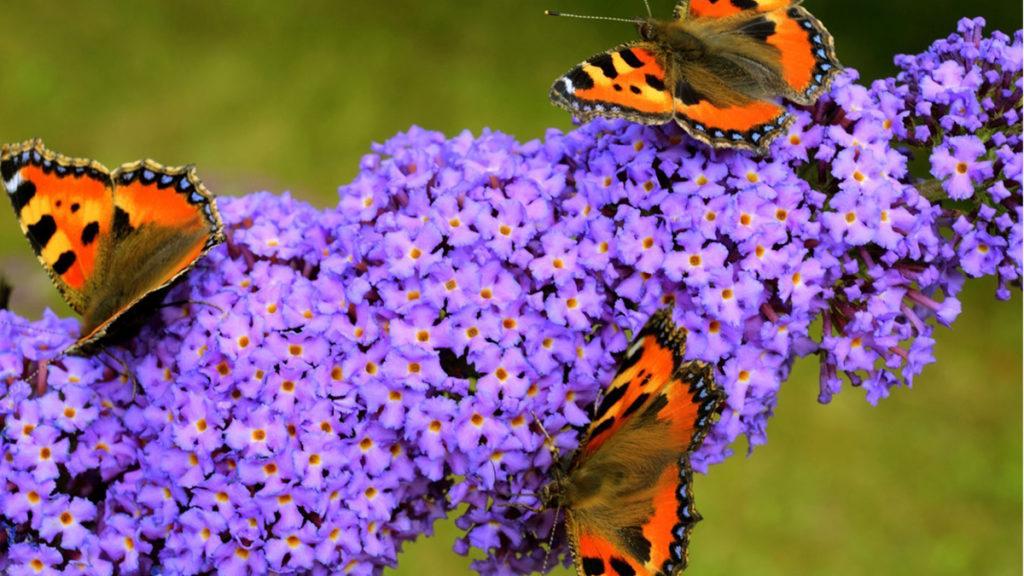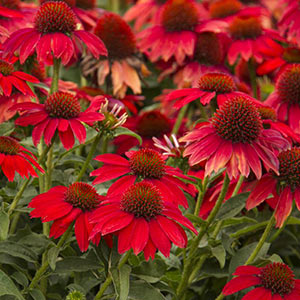Attracting bees, birds, butterflies and other wildlife to your garden is one of the best ideas. It helps to have a healthy, vibrant, sustainable landscape. The key is to plant a plot that provides and supports wildlife habitat year round, especially for birds.
Let’s start with the plants. To make this super-simple, we've graphed out three plants for each of the four seasons. These are ideal for supporting wildlife. Mix and match them for the look you want in your garden. As always, when it comes to perennials and shrubs, remember to plant in groups of three or more. (These are only a few of the many plants that are ideal for a wildlife habitat garden. Forage for more!)
(Be sure to check out the recommended plants for zones 3 – 5 and zones 9 – 11. Some plants can thrive in a wide range of zones.)
Spring
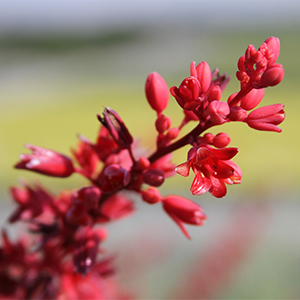
Brakelights® Red Yucca
Zone: 5 – 10
Vibrant, brake light-red blooms attracts loads of butterflies and beneficial insects. Hardy and water-wise! Full sun.
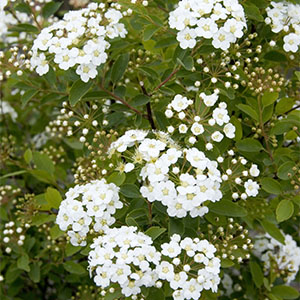
Renaissance Spirea
Zone: 3 – 7
Massive display of pure white flowers in early spring that lures butterflies and night pollinators. Full sun.
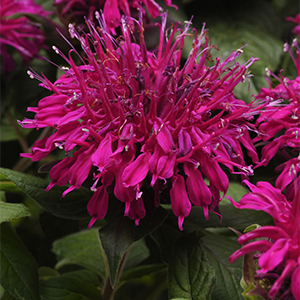
Balmy™ Purple Bee Balm
Zone 4 – 9
Bees, birds, hoverflies—everyone loves the shaggy flowers and fragrant minty-basil-scented foliage. Partial to full sun.
Summer
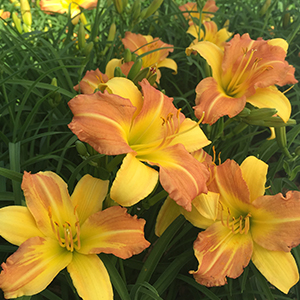
EveryDayLily™ Yellow Punch Daylily
Zone: 4 – 10
Hardy, dwarf, repeat-blooming daylily is a magnet for butterflies and hummingbirds from summer thru fall. Partial to full sun.
Sombrero Salsa Red Coneflower
Zone: 4 – 9
Big, bright red blooms for an easy, colorful summer border. A must-have for sunny gardens. Drought tolerant perennial.
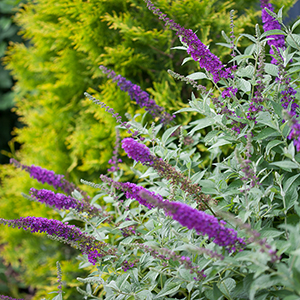
Flutterby Petite® Blue Heaven Butterfly Bush
Zone: 5 – 10
Beautiful blue blooms are accented by silver, fuzzy leaves are adored by butterflies and hummingbirds. Full sun.
Fall
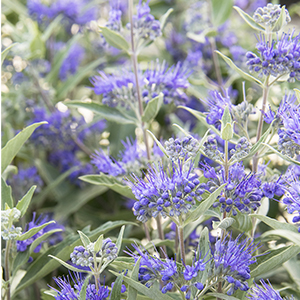
Dark Knight Bluebeard
Zone: 5 – 9
Fragrant foliage and deep purplish-blue flowers attracts butterflies over a long blooming season. Full sun.
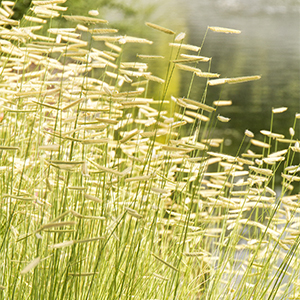
Blonde Ambition Blue Grama Grass
Zone: 4 – 9
Drama from summer through fall. Birds love the long lasting blonde seed heads that remain through winter. Full sun.
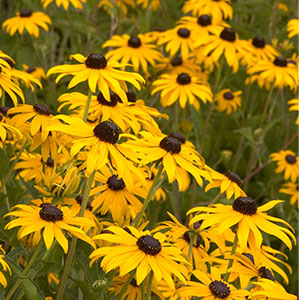
Goldsturm Black-Eyed Susan
Zone: 3 – 9
Native bees, honeybees, wasps, hoverflies throng to the abundant flowers and seed-filled heads. Full sun.
Winter
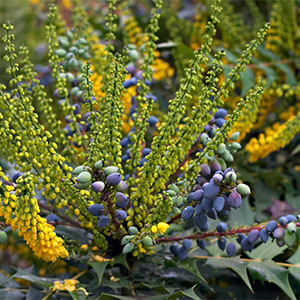
Charity Mahonia
Zone: 7 – 9
Clusters of nutrient-rich black berries develop in fall for winter eating by hungry birds. Full shade to partial sun.
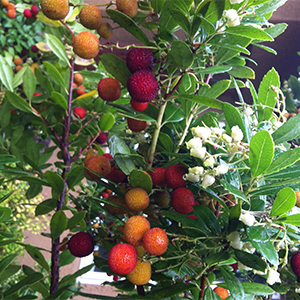
Dwarf Strawberry Tree
Zone: 6 – 9
Edible strawberry-like fruits from fall to late winter brings throngs of butterflies and hummingbirds. Partial to full sun.

Weeping Norway Spruce
Zone: 2 – 8
Birds and other wildlife forage for cones and snuggle-up in weeping branches that provide dense shelter. Partial to full sun.
Tips for Attracting (and keeping) Wildlife to Your Garden
Here are five key elements you’ll need to provide (none of this is complicated, we promise!):
- Evergreens and conifers that will feed and shelter wildlife, especially birds, year round.
- Something blooming for as many months as you can manage. Many pollinators, especially bees, forage during the entire growing season.
- Shelter for nesting or from bad weather. (Leave a hedge untrimmed and a section of lawn unmowed. Pile grass cuttings in a sunny spot. Provide some bare soil for ground nesting bees.)
- Limit your use of chemicals (both synthetic and organic) and use plenty of compost and mulch to build healthy soil. Healthy soils create healthy plants.
- Consistent source of clean, fresh water for drinking, bathing and breeding. And, speaking of water, butterflies love wet soil for sipping water and for the salts and mineral nutrients. A little dirty puddle is appreciated.
Here’s more information on attracting pollinators and a few more plants that are late summer bloomers.
